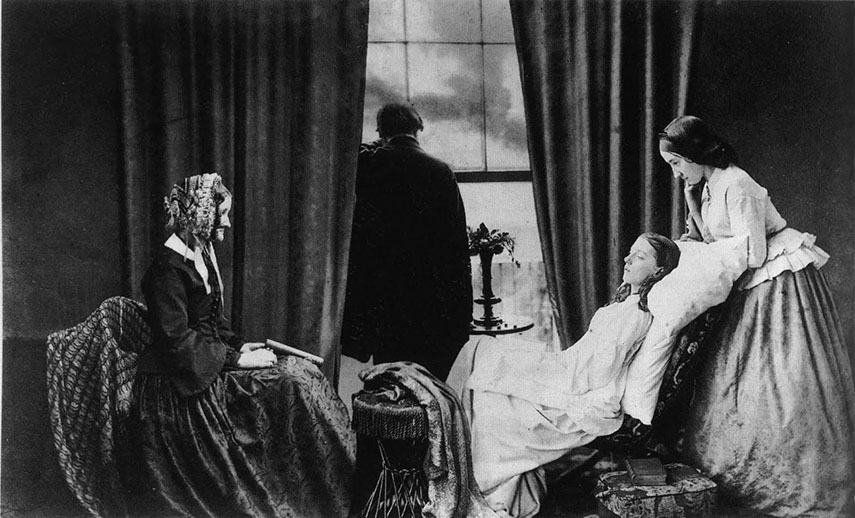Photomontage is the process and the result of making a composite photograph by cutting, gluing, rearranging and overlapping two or more photographs into a new image. Sometimes the resulting composite image is photographed so that a final image may appear as a seamless photographic print. A similar method, although one that does not use film, is realized today through image-editing software. This latter technique is referred to by professionals as “compositing”, and in casual usage is often called “photoshopping” (from the name of the popular software system). A composite of related photographs to extend a view of a single scene or subject would not be labeled as a montage.
history of photomontage:
The first and most famous mid-Victorian photomontage (then called combination printing) was “The Two Ways of Life” (1857) by Oscar Rejlander, followed shortly thereafter by the images of photographer Henry Peach Robinsonsuch as “Fading Away” (1858). These works actively set out to challenge the then-dominant painting and theatrical tableau vivants.
In 1916, John Heartfield and George Grosz experimented with pasting pictures together, a form of art later named “Photomontage.”
The pioneering techniques of early photomontage artists were co-opted by the advertising industry from the late 1920s onward. The American photographer Alfred Gescheidt, while working primarily in advertising and commercial art in the 1960s and 1970s, used photomontage techniques to create satirical posters and postcards.

this is probably the first photomontage ever came out
late 20th century photomontage eh Hannah Hosh
Hannah Höch ; 1 November 1889 – 31 May 1978) was a German Dada artist. She is best known for her work of the Weimar period, when she was one of the originators of photomontage.[1] Photomontage is a type of collage in which the pasted items are actual photographs, or photographic reproductions pulled from the press and other widely produced media.
Höch was not only a rare female practicing prominently in the arts in the early part of the 20thcentury – near unique as a female active in the Dada movement that coalesced in her time – she also consciously promoted the idea of women working creatively more generally in society. She explicitly addressed in her pioneering artwork in the form of photomontage the issue of gender and the figure of woman in modern society. Her transformation of the visual elements of others by integrating them into her own larger creative projects evidenced a well-developed early example of “appropriation” as an artistic technique.

